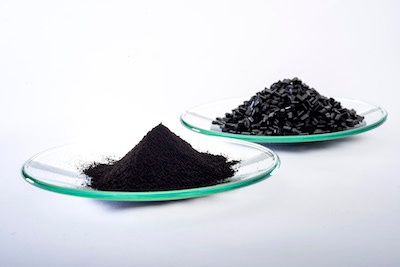Black pigment extends service life of plastic components
Up to 20 percent better reflectivity; reduces urban heat generation
August 6, 2019

Lanxess has developed a black pigment that reflects 20 percent more of the sun’s near-infrared radiation (NIR) than conventional products. Plastic roofs and façade elements that are colored with Bayferrox 303 T heat up much less due to solar radiation, meaning that the building's inside temperature can be reduced.
|
The temperature in a polymer matrix colored with Bayferrox 303 T is as much as 8°C lower. |
“The temperature in a polymer matrix colored with Bayferrox 303 T is as much as 8°C lower than when a conventional black pigment is used,” said Stefano Bartolucci, global market segment manager for plastics at the Inorganic Pigments (IPG) business unit at Lanxess. This improves the indoor climate and reduces energy consumption for air conditioning.
Using the Bayferrox 303 T black pigment can also extend the service life of a plastic component considerably as the thermal decomposition of a polymer matrix is reduced due to lower heat absorption. In addition, the difference between daytime and night-time temperatures is much lower. Plastic components are therefore less exposed to thermomechanical stresses that can lead to crack formation or even bursting.
“In addition to outdoor applications, Bayferrox 303 T’s characteristics make it suitable for use in the automotive industry, e.g. to color the dashboard, which is exposed to high and sustained solar radiation. Our pigment makes an effective contribution to reducing heat development in the passenger compartment,” said Bartolucci.
About the Author(s)
You May Also Like





